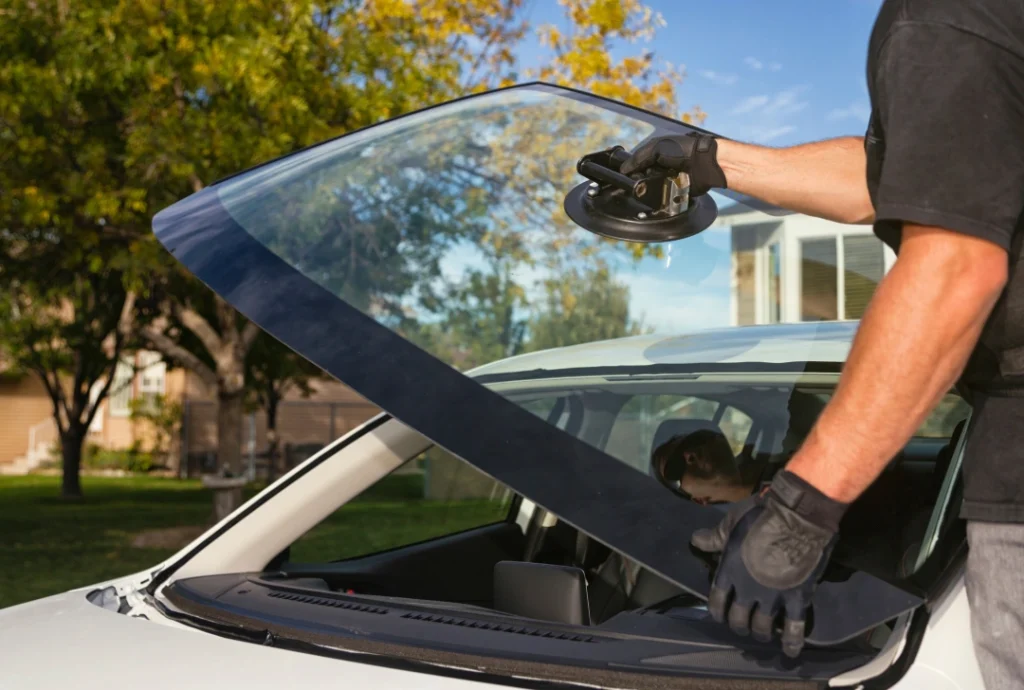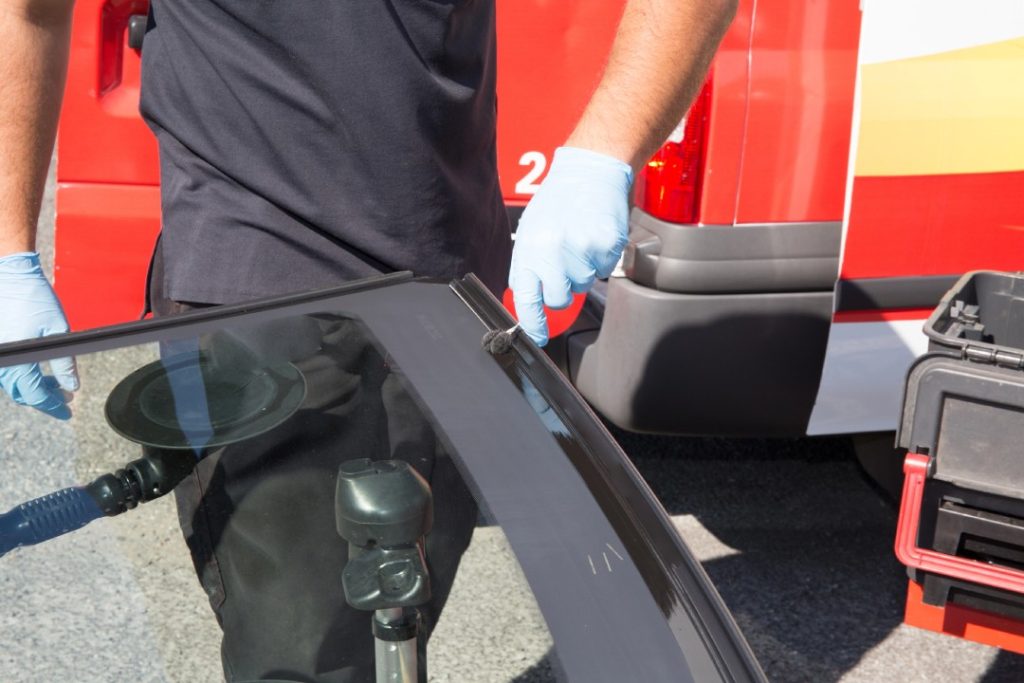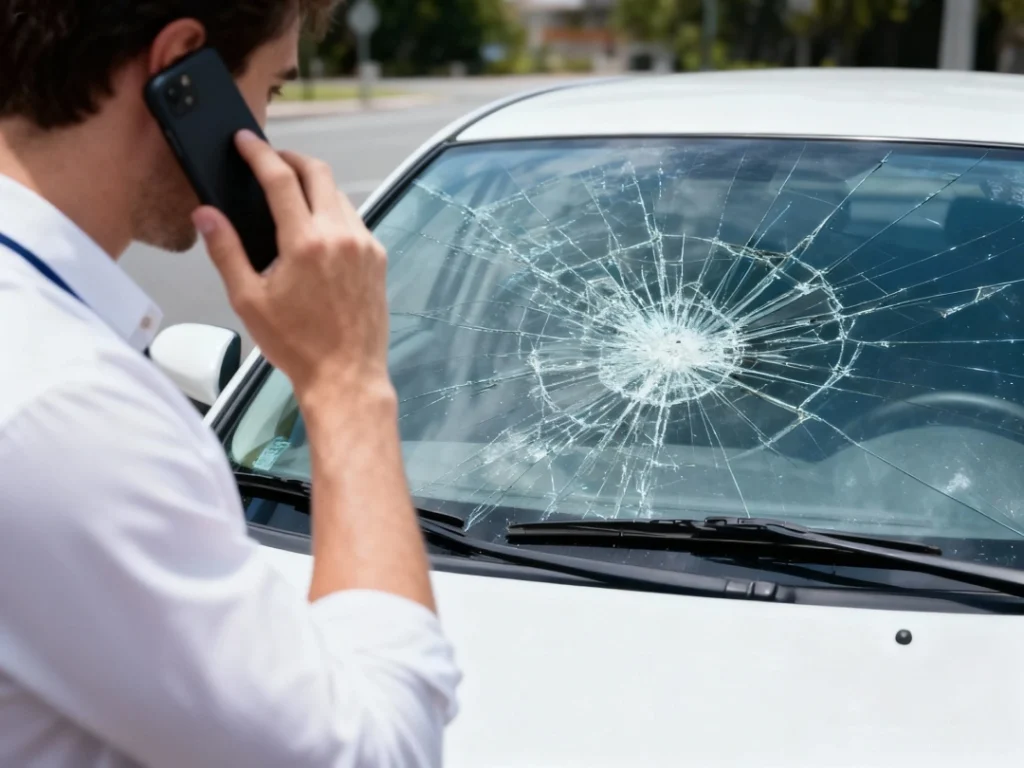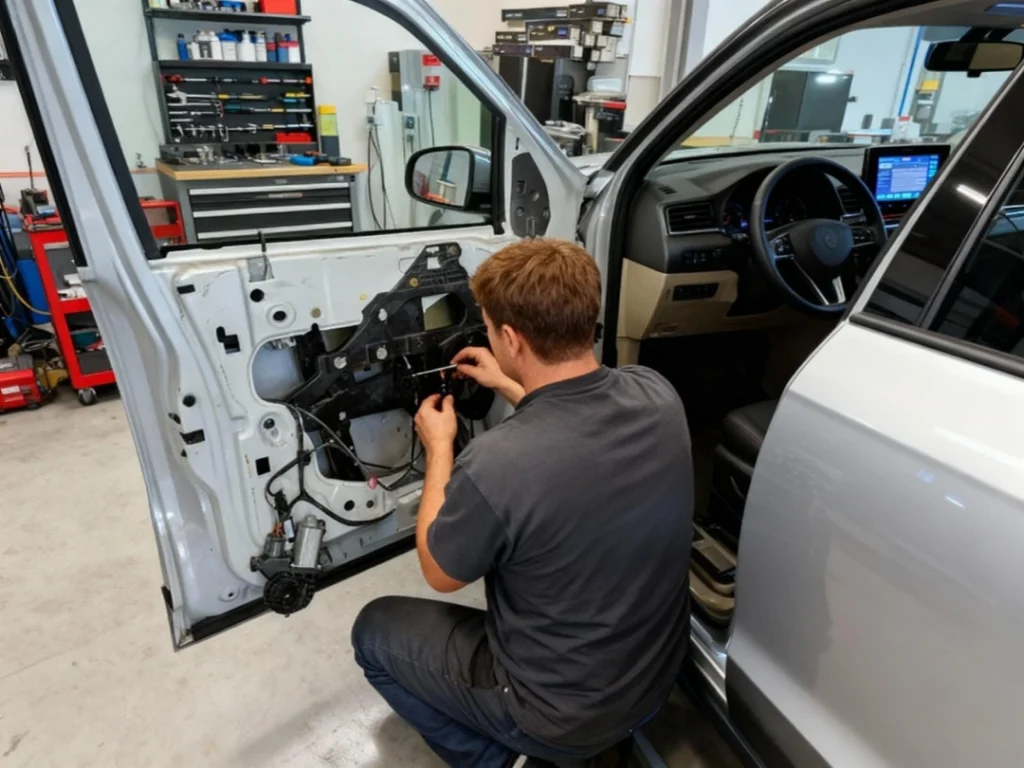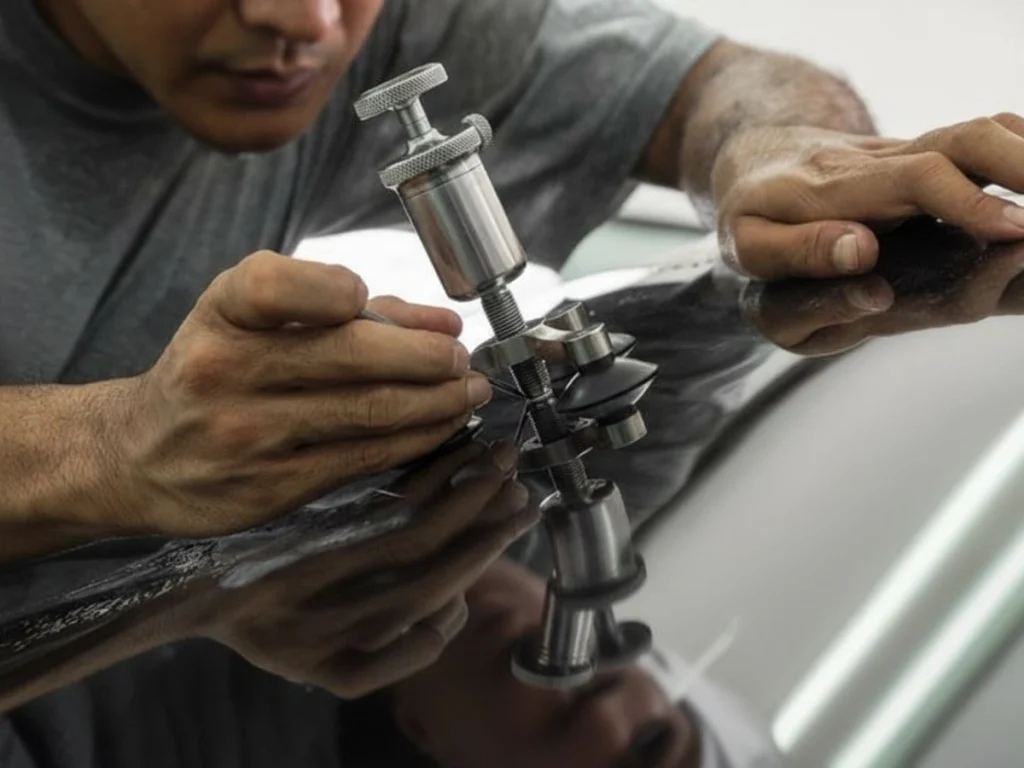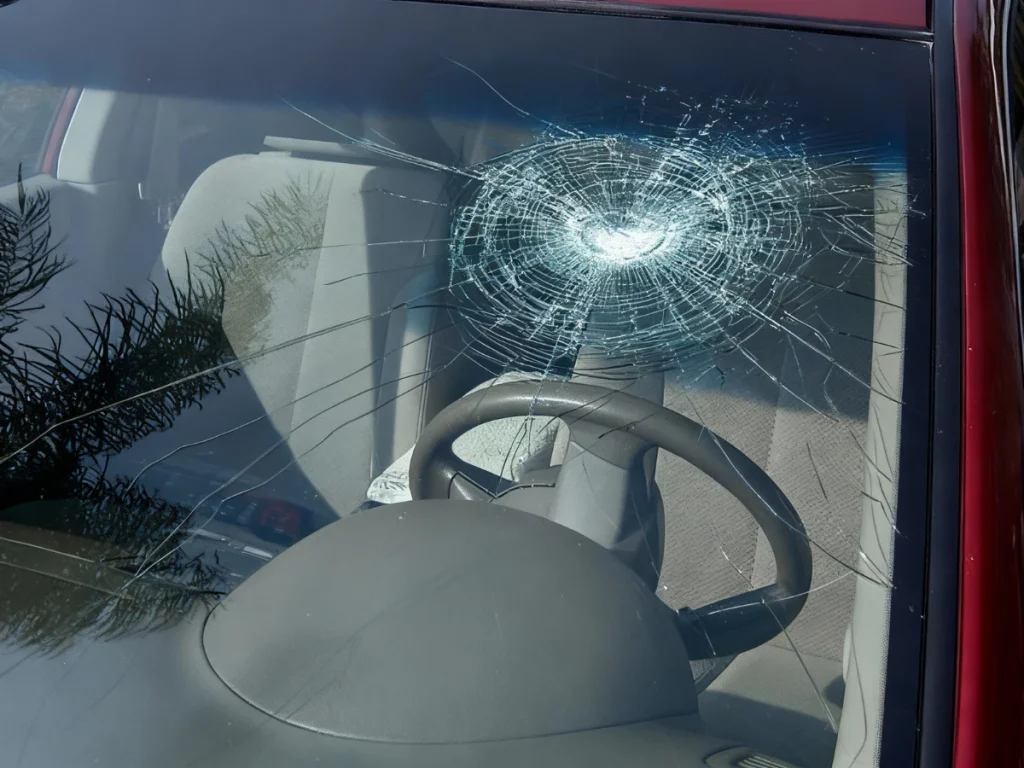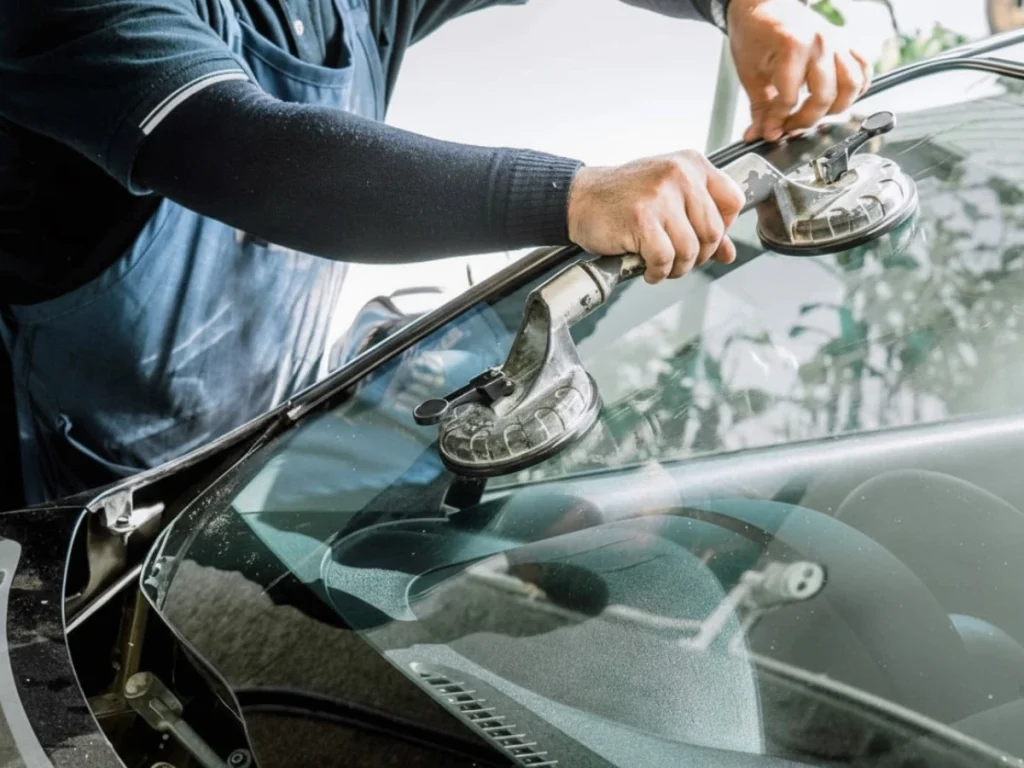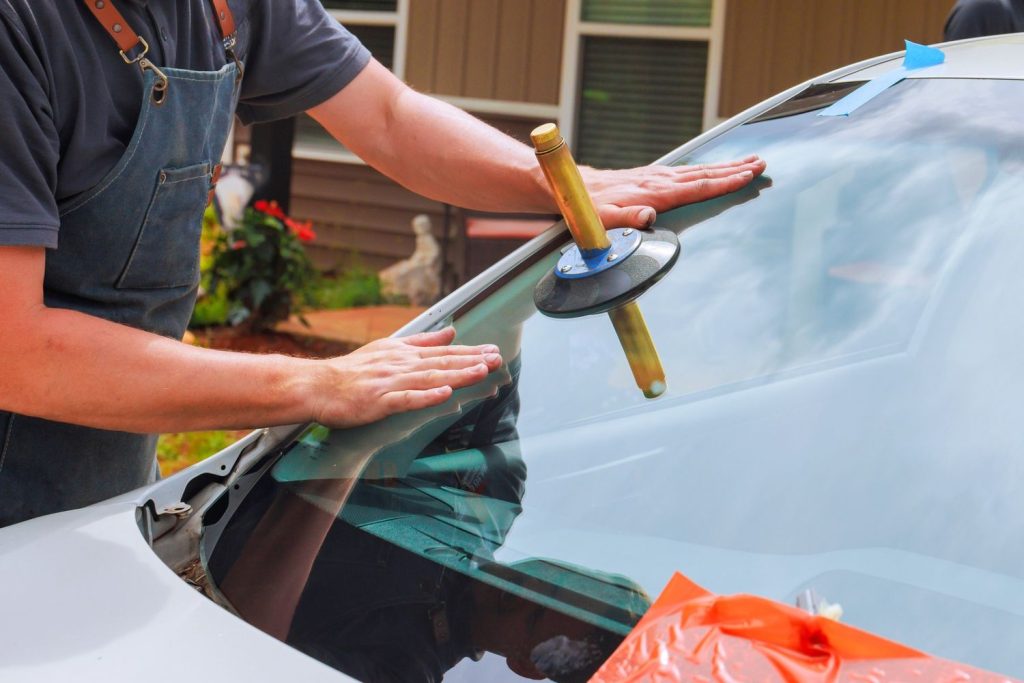How to Remove Hard Water Spots from Auto Glass
April 28, 2025
Hard water spots on auto glass can be a real headache. They form when mineral deposits (typically calcium and magnesium) from rainwater or tap water are left behind after the water evaporates from your windshield. These spots can obstruct your view, make your vehicle look unkempt, and even cause damage to the glass over time if left untreated. Fortunately, removing these spots is a doable task. With the right tools and knowledge, you can restore your windshield to its original, crystal-clear condition.
In this article, we’ll guide you step-by-step on how to remove hard water spots from auto glass, when to seek professional help, and tips to prevent them from forming in the future. Whether you prefer to tackle this issue yourself or you’d rather rely on professionals like Next Shield Auto Glass Repair, we’ve got you covered.
Understanding Hard Water Spots on Auto Glass
Before jumping into how to get rid of hard water spots, it’s important to understand what they are and why they appear.
What Causes Hard Water Spots?
Hard water spots form when water, typically containing high levels of minerals such as calcium, magnesium, or lime, evaporates from your windshield or windows. As the water dries, it leaves behind these mineral deposits, which are often difficult to remove.
If you live in an area with hard water or experience frequent rain, you may notice these spots more often. Additionally, car washes that use untreated water or water from sprinklers can exacerbate the problem. Over time, the buildup of mineral deposits can cause permanent damage to your windshield, making them even harder to remove.
How Hard Water Spots Affect Auto Glass
Hard water spots not only diminish the aesthetic appeal of your vehicle but can also interfere with your driving experience. These spots can blur your vision, especially in bright sunlight or at night when headlights reflect off the windshield. This can lead to safety concerns while driving, particularly if the spots are large or widespread.
In addition to affecting visibility, hard water spots can cause long-term damage to the glass surface. The minerals can etch into the surface of the windshield, leading to permanent scratching and, in some cases, requiring costly repairs or even windshield replacement.
The Risks of Ignoring Hard Water Spots
While it may seem harmless to leave hard water spots on your windshield, ignoring them can result in more significant issues down the road.
Long-Term Damage to Auto Glass
As mentioned, if you allow hard water spots to remain on your windshield for an extended period, they can cause irreversible damage. The minerals from the water can slowly wear away at the glass surface. Over time, this can cause the spots to become more stubborn and resistant to removal, potentially requiring specialized treatments or even a full windshield replacement.
Additionally, the minerals may become embedded in the glass, causing a permanent haze or cloudiness. This type of damage can affect the structural integrity of the windshield and make it more prone to cracking or chipping.
Impact on Visibility and Safety
The primary concern when it comes to hard water spots is the effect they have on visibility. Even small spots can cause light distortion, which can be distracting and dangerous while driving. This is especially problematic when driving into the sun, at night, or during heavy rain. If left untreated, hard water spots could lead to significant visibility issues, potentially putting you and your passengers at risk.
Step-by-Step Guide to Removing Hard Water Spots
Removing hard water spots requires patience and the right tools, but it’s not a difficult task. Here’s a detailed, step-by-step guide on how to tackle the job:
Essential Tools for the Job
Before getting started, gather the following supplies:
- Microfiber towels: These are crucial for wiping the glass without scratching it.
- A spray bottle: You’ll need this to apply your cleaning solution to the spots.
- Vinegar or a commercial water spot remover: Both of these are effective at breaking down mineral deposits.
- Baking soda: This is a mild abrasive that can help scrub away stubborn spots.
- Soft sponge or cloth: This ensures you don’t scratch your glass while scrubbing.
Preparing the Auto Glass for Cleaning
It’s important to prepare the auto glass before applying any solution to the hard water spots. Here’s how:
Wash the Vehicle Thoroughly
Begin by washing the entire vehicle to remove dirt, dust, and other debris that may be on the windshield. Use a gentle car shampoo and a soft microfiber cloth to wash your car. Make sure to thoroughly rinse and dry the windshield to avoid rubbing any abrasive dirt or particles into the glass while working on the water spots.
Techniques for Removing Hard Water Spots
There are several methods to remove hard water spots, ranging from simple DIY solutions to more specialized products. Here’s a rundown of the most effective techniques:
Using Vinegar and Water Solution
One of the easiest and most cost-effective methods is using a mixture of white vinegar and water. The acidity in vinegar helps to break down the minerals, making them easier to remove. Here’s how to use it:
- Mix equal parts white vinegar and water in a spray bottle.
- Spray the solution directly onto the hard water spots.
- Allow it to sit for about 5-10 minutes to give the vinegar time to dissolve the mineral deposits.
- Using a microfiber cloth, gently wipe the glass in a circular motion.
- Repeat if necessary for stubborn spots.
Using a Commercial Water Spot Remover
If vinegar alone doesn’t do the trick, you can turn to commercial water spot removers that are specifically formulated for auto glass. These products often contain stronger ingredients that can effectively dissolve the mineral deposits. Follow the manufacturer’s instructions on the label and test the product on a small, inconspicuous area of your windshield first to ensure it won’t cause damage.
Using Baking Soda Paste
Another effective DIY method involves creating a paste from baking soda and water. The mild abrasiveness of baking soda helps scrub away the mineral deposits without scratching the glass. Here’s how to use it:
- Mix baking soda and water to form a thick paste.
- Apply the paste directly onto the hard water spots.
- Using a soft sponge or cloth, gently rub the paste in a circular motion to lift the deposits.
- Wipe off the paste with a damp cloth and dry the glass with a microfiber towel.
Polishing the Glass After Spot Removal
Once you’ve removed the hard water spots, it’s important to finish the job by polishing the windshield to restore its clarity. Here’s how:
- Apply a glass cleaner to the windshield.
- Using a clean microfiber cloth, buff the glass in a circular motion until it’s streak-free and clear.
- This step not only improves the appearance but also provides a layer of protection to keep your windshield looking clean for longer.
Next Shield Auto Glass Repair Serving the Edgecomb Community and Beyond in Baltimore
Next Shield Auto Glass Repair is dedicated to serving the diverse needs of the local community of Baltimore, including individuals residing in neighborhoods like Edgecomb. With its convenient location near landmarks such as the Edgecomb Park and major intersections like Oakford Ave. and Pimlico Rd. (coordinates: 39.34090716618791, -76.66492172036872), we offer Auto Glass Repair Service Baltimore services.
Get Auto Glass Repair Service Baltimore Services at Edgecomb Now
Navigate from Edgecomb to Next Shield Auto Glass Repair Now
When to Seek Professional Help for Auto Glass Repair
While DIY methods are effective for most people, some situations may require professional intervention. Here are a few signs that it might be time to call in the experts.
When to Call Next Shield Auto Glass Repair
If you’ve tried all the DIY methods and the hard water spots are still visible, it may be time to call a professional like Next Shield Auto Glass Repair. We have access to specialized tools and products that can tackle the most stubborn spots without damaging your windshield.
Why Professional Auto Glass Repair Services are Beneficial
A professional service not only ensures that the job is done right but also reduces the risk of causing further damage. Hard water spots can sometimes lead to permanent etching or hazing on the glass, which requires expert knowledge to correct. By hiring a professional auto glass repair service, you can avoid costly repairs and prolong the life of your windshield.
Preventing Hard Water Spots from Reoccurring
Once you’ve removed the hard water spots, the next step is to prevent them from coming back.
Apply a Protective Coating
One of the most effective ways to prevent future hard water spots is by applying a protective coating to your windshield. Products like Rain-X create a water-repellent barrier that makes it harder for water droplets to stick to your windshield. This reduces the chances of mineral buildup and helps your windshield stay cleaner for longer.
Regular Cleaning Habits
Maintaining a regular cleaning schedule is key to preventing hard water spots. After washing your car, use a microfiber cloth to dry off the windshield to prevent any water droplets from drying on the glass. In addition, consider using a squeegee to remove excess water after it rains or after washing your car.
Maintaining Clear Auto Glass
Removing hard water spots is an important part of keeping your auto glass in top shape. While DIY methods can be effective, when in doubt, it’s always a good idea to call in the professionals. Next Shield Auto Glass Repair offers expert auto glass services in Baltimore, ensuring your vehicle’s windshield stays clear and free from any unwanted spots or damage.
Frequently Asked Questions
1. What causes hard water spots on auto glass?
Hard water spots are caused by mineral deposits, mainly calcium and magnesium, left behind after water evaporates. These spots can form from rain, sprinklers, or even washing your car with untreated water.
2. Can hard water spots permanently damage my car’s glass?
Yes, over time, untreated hard water spots can etch the surface of your auto glass, making them more difficult to remove and potentially causing permanent damage.
3. What’s the best method to remove hard water stains from auto glass?
Using a vinegar solution, commercial water spot removers, or a professional-grade glass polish works well. For stubborn spots, it’s best to consult professionals like Next Shield Auto Glass Repair, who offer expert Auto Glass Repair Service in Baltimore.
4. Is it safe to use household vinegar on my windshield or windows?
Yes, white vinegar is a safe and effective option to break down mineral deposits. Just be sure to rinse thoroughly with water afterward to prevent residue buildup.
5. How can I prevent hard water spots from forming again?
To prevent future spots, dry your car after washing, avoid parking near sprinklers, and consider applying a water-repellent coating like Rain-X to your auto glass.
6. Does Next Shield Auto Glass Repair help with hard water stain removal?
Absolutely! Next Shield Auto Glass Repair provides professional Auto Glass Repair Service in Baltimore, including expert stain removal, polishing, and protective treatments to keep your glass crystal clear.

RESTORE YOUR
WINDSHIELD TODAY!
OR CALL US
(443) 296-0064
Restore Your
Windshield Today!
For dependable and expert auto glass repair services in Baltimore, look no further than the trusted professionals at Next Shield Auto Glass Repair. Reach out to us today to schedule an appointment or request a complimentary quote. Discover our unwavering commitment to unmatched quality, exceptional customer service, and our fervor for providing top-notch auto glass repair solutions. Rest assured, we are here to restore the safety, functionality, and aesthetics of your vehicle, ensuring your utmost satisfaction.


